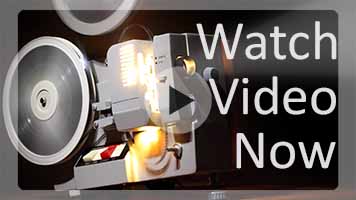Theory U is primarily a way of seeing the world differently, in a way that is hopefully better for all humanity. It is therefore a framework from distancing oneself from the day-to-day execution in a way that allows for a deeper experience. The model builds on seven inflection points.
The Seven Inflection Points
The seven inflection points are:
- Downloading – Reacting to patterns of the past and viewing the world from inside your mind.
- Seeing – Suspending judgement and accepting that our perception of reality isn’t the only one.
- Sensing – Seeing from the perspective of the system that we’re all a part of.
- Presencing – Transitioning our thinking from the present to the future.
- Crystalizing – Experimenting with our mental model and investigating possible futures. Identifying paths forward that are the “best.”
- Prototyping – Developing small-scale tests that validate whether our mental models are right.
- Performing – Implementing the changes we prototyped into the larger systems of our lives and our world.
Let’s look at each in a bit more detail.
Downloading
In the downloading stage, we’re operating – but we’re doing so at an unconscious level. We’re operating from within our own frame of reference and rarely stepping outside to understand what else may be happening. Daniel Kahneman would call this System 1 in operation. (See Thinking, Fast and Slow for more.) To get past this, we’ve got to learn to see outside of ourselves.
Seeing
Learning that there are other perspectives than our own may start in childhood, but it can take a real focus to seek out others’ perspectives and allow them to clash with ours. Early in our lives, we can’t separate what we know from what others know. If we know it, then others should, too; but after a few years, we began to realize that others may not have the same information we do.
In Incognito, David Eagleman explains how what we see is a recreation in our mind. It’s a sort of persistent fiction that we’ve been taught to believe. Seeing is about accepting that others have different perspectives and learning to be open to them. Seeing is about opening our eyes to see how others may have a different understanding and perspective on the situation.
Sensing
In sensing, we begin to see the systems that we’re in. Instead of blaming the people for bad outcomes or situations, we begin to realize that the system is designed to create these situations. (See Seeing Systems for examples of how this plays out.) This is built upon a foundational understanding of how systems work and how iterations through a system can lead to some unexpected results. Thinking in Systems is a good primer on systems that can facilitate moving through this inflection point.
Presencing
When you’re locked in the day-to-day survival mode, your capacity for future thinking or alternative thinking is limited. (See Drive for more on how our options are limited by stress.) In our quest to create change, we seek to build psychological safety. (See The Fearless Organization for more on psychological safety.) With psychological safety in place, we can begin to shift our perspective of time from the present to the future – or the possible future. (See The Time Paradox for more on different perspectives of time.)
Crystalizing
As we evaluate multiple perspectives, options, and futures, crystalizing allows us to identify the one approach that we believe is best. Crystalizing isn’t necessarily rational decision-making but may more accurately be perceived as recognition-primed decisions (RPD) as laid out by Gary Klein in Sources of Power. The mental simulations that occur in the crystalizing stage allows us to identify better and worse options for going forward and to pick the one we believe is best.
Prototyping
The next stage is to try small things to see if they work. One of the challenges we have is that we often stop trying things, because we believe they won’t work or we’re not good enough. In Creative Confidence, Tom and David Kelley explain that we all can be creative, but it sometimes gets criticized out of us. In this stage, the point isn’t to be right. The point is to test ideas.
Performing
Once you have the pattern working, it’s time to replicate the pattern to take advantage of what you’ve discovered. Michael Gerber in The E-Myth Revisited would think of this as systemization. Richard Hackman, in Collaborative Intelligence, looks at this as the first but essential measure of the performance of a team. He goes on to look at the team dynamics to suggest that performance in and of itself shouldn’t be the end goal. Building the process for how to achieve continued success should be.
Criticisms and Cautions
Theory U requires a substantial personal investment in change that is difficult to obtain from everyone. (See Change or Die for the difficulty of accomplishing individual change.) Theory U is less of an organizational change model and more of a model for self-discovery.
Resources
- Otto Scharmer’s Theory U: Leading from the Future as it Emerges
- Theory U Revisited


